#Winterthur Library
Explore tagged Tumblr posts
Text
How about a fancy fish flourish for #FishFriday 🐟?

From "The Penman's Paradise” by Knapp & Rightmyer (1853), reproduced in Ames' Book of Flourishes: 125 Designs by 72 Leading American Penmen (1890). Found while perusing the stacks at Winterthur Library today.
#animals in art#european art#19th century art#pen and ink#book plate#print#penmanship#calligraphy#zoomrphic calligraphy#fish#Fish Friday#flourish#British art#library visit#Winterthur Library#monochrome#black and white
558 notes
·
View notes
Text
@book_historia
64 notes
·
View notes
Text

📍Villa Rychenberg, Winterthur, Switzerland
(dated 1888)
#dark academia#light academia#classical#academia aesthetic#escapism#academia#books and libraries#classic literature#books#architecture#old#historical#place#travel#old photography#Villa Rychenberg#Winterthur#Switzerland#old building#1800s#19th century#royal core#cottage core#aesthetic#mood#vibe#tumblr
43 notes
·
View notes
Text
A jewel box of a book ✨ This 19th century French sales sample book contains very thin metal ornaments, made of foil over card. These would have been used like fancy sequins, and adorned everything from cards to clothes! They’re sometimes called Dresdens after the town in Germany where many were made. I know I say this a lot, but this book really floored me 🤩 Part of col. 838 in the Winterthur Library 📚
14K notes
·
View notes
Text

1800-1812 Benjamin Trott - Benjamin Chew Wilcocks
(Winterthur Museum, Garden & Library)
43 notes
·
View notes
Text


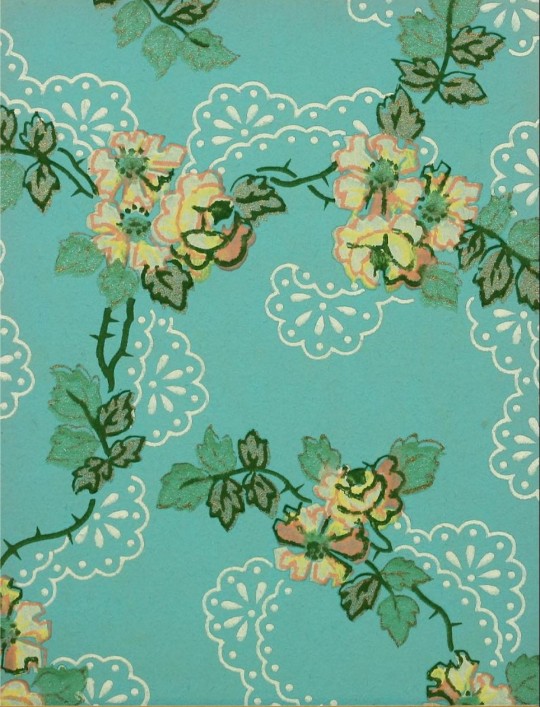

1906 Wallpapers from Sears, Roebuck & Co.
From the Winterthur Library Collection on archive.org
#internet archive#edwardian#i thought the colors were kind of fun together#interior decorating#vintage
40 notes
·
View notes
Text
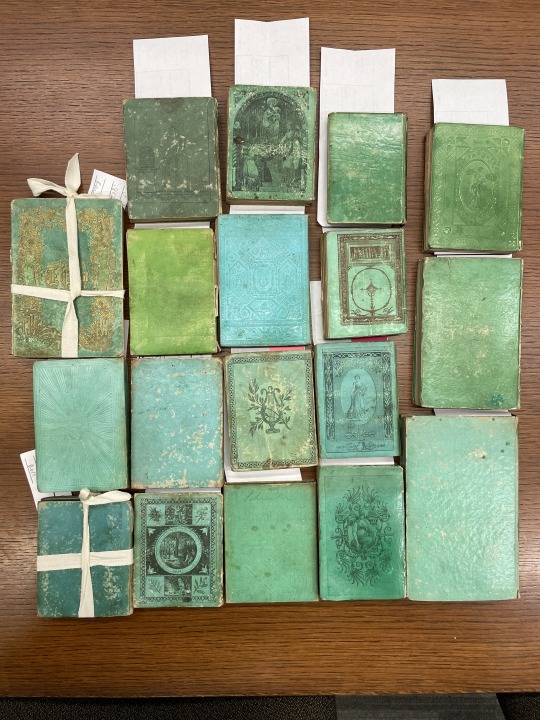

One of these things is not like the other…
The bindings of the books pictured in plastic bags contain arsenic, while the un-bagged books do not.
Copper arsenic compounds were used as a green pigment in textiles and home furnishings during the 19th century. In 2019, Winterthur/University of Delaware Program in Art Conservation embarked on a study of green cloth-covered book bindings from the 19th century and continues to lead the way on research regarding these compounds in library materials. Their current findings suggest that the publication date range for volumes containing arsenic is 1830 to 1880 and that such books are bound in green cloth or green leather. Most green book covers from this period do not contain arsenic. (While books containing arsenic are green, not all green books contain arsenic.) Our best current estimate based on the testing we have done is that less than .03% of the print titles in our collection contain arsenic. As we identify print titles that contain arsenic, we will take measures to provide other options to make the content available wherever possible.
Read more about how the University of Chicago Library is handling these rare green bindings.
456 notes
·
View notes
Note
🌸List five things that make you happy, then put this in the askbox of 10 more people. Let's spread some positivity and joy today!🌸Rose💜
Thank you @nothingsbetterthancoffee!
Ateez! The music, the performances, the fandom...everything about them is giving me joy right now. We have so much to look forward to with their comeback on the horizon!
Planning trips! I am headed to LA this week for a vacation and I can't wait to look at art, eat good food, and enjoy some warm weather. I just planned another trip later this summer with one of my best friends; we'll be taking a road trip down south. I really can't wait to spend long car rides talking about anything and everything.
Working through my backlog of JBL! I just finished Sugar Dog Life and it was delightful. I feel like this one got lost in the shuffle last year, but it was warm and lovely and filled with extended scenes of people cooking and enjoying meals together.
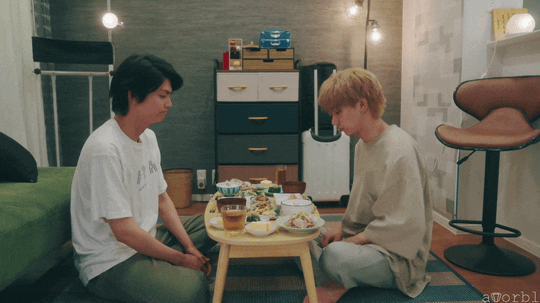
My job! I'm a curator and am currently working on an exhibition for next spring. Today I had a really good writing day and felt proud of the labels I completed. I also got a really lovely email from a senior scholar in my field, who complimented me on a talk I recently gave. He said "I am always most impressed by original research in archives--this is a wonderful piece of work!" This made me so happy I almost cried.
@book_historica is my current favorite instagram follow. They are the Curator of Special Collections at the Winterthur Library and make wonderful videos of rare, beautiful, and interesting books. My favorite is this one, from a young Victorian girl who made a scrapbook dream house:
instagram
19 notes
·
View notes
Note
Poison books!
Two of you came in my inbox asking for the poison books thing, so it’s gonna go to the first person who asked. So! Today You Learned about the Poison Book Project!
Back in 2019, Melissa Tedone, the head of material conservation, at the Winterthur Museum, Garden, & Library in Delaware, noticed that there was something weird about an 1857 book she was working on. Bits of green paint were flaking off the cover! That’s not great. She sent it to the lab and found that the green pigment contained copper and, uh, arsenic.

That’s a poison, btw.
They found eight more books in their collection that had arsenic in the binding.
So it seems that in the mid-1800s, book cloth was used instead of leather binding, and those were colored with different pigments, including something called ‘Paris Green’ which is made with arsenic. Books stopped being made with arsenic not because they were poison, but because the color fell out of fashion.
Now, okay, unless you put the book in your mouth or something, you’ll probably not get poisoned by an antique book. Still! A lot of these texts are used by antiquarians and researchers, who are likely to handle them much more and get affected by the poison. It’s important to identify it, then. As a result, the University of Delaware launched the Poison Book Project, in which researchers and collectors can send in their antique books and see if they’re full of poison. They also send researchers to smaller collections who can’t afford to ship or lose texts, and help them figure out what is and isn’t poison.
And it’s not just arsenic! That story I linked to? It opens describing the case of Sarah Mentock, who sent in her antique copy of Sir Walter Scott’s Lord of the Isles which contained arsenic, lead, and mercury. When the Poison Book Project got it, they sent a reply telling Mentock that this was the most poisonous book they’d ever tested.

These books are all poisonous. That’s insane, guys. Again, you’re not going to die, or even probably get sick, by touching them, but don’t touch your face afterward.
Poisonous books. That’s A Thing That Exists.
#Poison Book Project#antiques#Today You Learned#Fun Fact Friday#books#poison#arsenic#chemistry#libraries
12 notes
·
View notes
Text

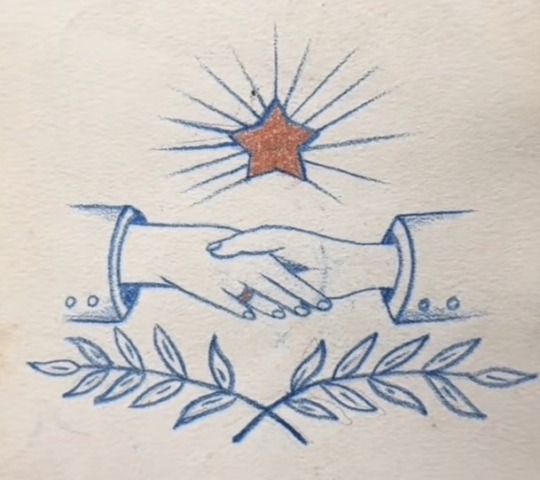
Tattoo flash by Danish artist W. Christiansen, 1897
Courtesy, The Winterthur Library
78 notes
·
View notes
Text






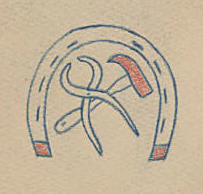

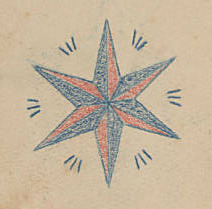
Tattoo designs, 1897
By W. Christiansen, Copenhagen, Denmark Featuring lots of women (often circus performers or dancers) and nautical or patriotic designs.
Document 119 in the Winterthur Library Digital Collection
7 notes
·
View notes
Text




#FindsFriday:
Illustrations from _Our four-footed friends & favourites_ (London : T. Nelson & Sons, 1890s): Dog - Cats - Rabbits - Squirrel
another fun find from Winterthur Library’s special collections :)
#animals in art#european art#19th century art#museum visit#library visit#Winterthur Library#British art#book plate#squirrel#rabbit#cat#dog#kitten#dogs in art#cats in art#pets in art#domesticated animals#illustration#mother and baby animals#baby animals
24 notes
·
View notes
Text
John André, cut by himself while totally wasted. (Or I guess maybe cut by someone else who was even more of an amateur than he was?) There are other silhouettes of him floating around where he has more upper lip and less double chin - this one, from the Library Company of Philadelphia, for example, or the one on p 172 of the Ronald bio (which he credits to the New York Public Library). (Note that the labels on all those portraits must have been written after the fact because he was Captain André in 1778.)
Oh hey, Winterthur has a ton of silhouettes attributed to him (which frankly look pretty amateur - the LCP and Ronald silhouettes don't so much). (I mean, to people who actually know from silhouettes, I'm sure those also look totally amateur, but at least they're passable. In general his artwork is very clearly that of a talented amateur so there's some stuff where you're like, "that's really surprisingly good, actually" and then other stuff that's "....oof".
We don't talk about his poetry. 18th century poetry makes me start bleeding from various orifices so I am unqualified to talk about his poetry. (Ok, with the short poems my eyes just get a little bloodshot, but I don't go near "The Cow-Chase" because it would look like a murder scene.)
Also he seems to have had general satirical tendencies, not limited to making fun of the Americans. The Hatch bio has a page where he was sketching other British officers and it's all snub noses and stockings sagging around skinny calves - not really a catalog of male beauty here. (Somewhere, John André: "Look, not to be a prick, but if I wanted male beauty, I'd just get a mirror." Fair enough, Major. Fair enough.) There's also the sketch of what Flexner - who refers to it as Hogarthian, though I think Hogarth's satire tended toward morals and André was probably just amused - says is either a church or a court and Hatch says is a church (and which is in the Hatch bio) and the Quebec tavern scene, which I don't like. I think it's badly composed, though that might be because it's in pencil and I can never see what's going on in his pencil drawings because of the way everything has faded.)
Amusingly, it looks like Sue McKechnie may have included him in British Silhouette Artists and Their Work which is I think supposed to be the bible for silhouette artists. (And is nearly $200 on Amazon, but I should check Biblio because The Accomplished Lady was nearly $100 on Amazon but less than half that on Biblio, even including the exorbitant costs of shipping from the UK to the US and even including that I had to do expedited shipping because standard said it would take 21 to 84 days to arrive, presumably because they were taking the book on a leisurely walking tour of the Lake District before they sent it to the US and after all that it wasn't even that much cheaper than expedited.) Also sort of full circle because the reason I even know about the McKechnie book is because I was so taken by the silhouette in the Ronald bio and got interested in silhouettes in general.
2 notes
·
View notes
Text
Do you have any tattoos? ⚓️ I have a bunch, so I was very excited to come across these 19th century tattoo flash books in the Winterthur Library – and they’re digitized! You can see them here 📚
7K notes
·
View notes
Text

1726-1730 John Smibert - Sarah Middlecott Boucher (Mrs. Louis Boucher)
(Winterthur Museum, Garden & Library)
40 notes
·
View notes
Video
vimeo
HIV and the Journey Toward Zero Part 1 from Journey Towards Zero on Vimeo.
"HIV and the Journey Toward Zero" sparks important conversations around the end of the HIV epidemic. What does “the end” mean for those who have been there from the start, those living with HIV today and those leading the way to an HIV-free future?
"HIV and the Journey Toward Zero" spotlights the perspective of some of Chicago’s most prominent activists. The film is presented in partnership with the Chicago Department of Public Health, Tessa Films and local community organizations. Join us as we hear from long-term survivors, newly diagnosed individuals, clinicians, researchers and community leaders — the voices that, together, can make HIV history.
Director: Chan C. Smith Producer: Lisa Masseur, Tessa Films Editor: Christina Stumpf Director of Photography: Ashley C. Battle Original music composed by: Joe George Shadid Line Producer: Sarah Minnie Creative Producer/Consultant: Sanford E. Gaylord Additional Camera Operator: Chan C. Smith 1st Asst. Camera/Camera Operator: Candice Majors DIT: Eric Almond Additional DIT: Emmanuel Bansa Gaffer: Kemi Mayomi Grip/Swing: Maddie C. Dodge Production Coordinator/Associate Producer: Julia Barr Payroll Manager: Holli Hopkins McGinley Production Business Manager: Mary Pat Forston Production Accountant: Lisa Bird Sound Utility: Nicholas Fanelli Key Makeup Artist: Libby Knapp Production Assistants: “Moishe” Zoe Bernardean, Joanna Bozic, Nick Canonaco, C’airra Cortez, John P. Harris, Mireillee “M” Lamort, Alex Monsalud, Luis Trevino Colorist: Craig Leffel Dialog Editor: Steve Wilke, Mix Kitchen Sound Effects Editor: Brian Leitner, Mix Kitchen Supervising Sound Editor/Re-Recording Mixer: Sam Fishkin, Mix Kitchen Archival Producer: Alexis Jaworski Research Assistants/Production Assistants: Otito Greg-Obi, Ronnie Chatterjee
Chicago Dept. of Public Health: Executive in Charge of Production: David Kern Chief Development Executive: Jorge Cestou Director of Creative Affairs: James Scalzitti Creative Executive: Riley Sorin
Stock and archival footage and images provided by: ACT UP AIDS Foundation of Chicago Associated Press The American Association for the Advancement of Sciences Tracy Baim Jeff Berry Doug Birkenhauer Lora Branch Caprice Carthans CBS Chicago Centers for Disease Control and Prevention Chicago Tribune Pat Cummings Damn Interfering Video Activist Television Terry Dudley The Estate of Mark Morrisroe (Ringier Collection) at Fotomuseum Winterthur Sanford E. Gaylord Gerber/Hart Library and Archives Getty Images Rick Guasco Lisa Howe-Ebright Tim Karr Owen Keehan David Lebe The Legacy Project Rae Lewis-Thornton Thomas McGovern, from Bearing Witness (to AIDS) The Morbidity and Mortality Weekly Report National AIDS Memorial National Institutes of Health U.S. Clinical Center National Library of Medicine Alice O’Malley Pond 5 Positively Aware Magazine by TPAN Public Arts Fund Alon Reninger/Contact Press Images John Ryan Victor Salvo Dean Sameshima San Francisco History Center, San Francisco Public Library Renslow Sherer Tactical Media Files The 10% Show Evany Turk Video Data Bank Windy City Times/Outlines/BLACKlines Archives, by Tracy Baim, Mike Carter, Genypher Novak and Rex Wockner Israel Wright
Special thanks to: OTV—Open Television Alphawood Foundation Gerber/Hart Library and Archives Tracy Baim Lora Branch Sharon Zurek Dave Beedy Lori Cannon Victor Salvo Owen Keehan Anthony Hirschel Melissa Terrell Minnie Productions Eleven04 Moonwalker Cafe Chicago Film Office Illinois Film Office
Spoken word by Storie Deveraux “June 5, 1981”
Additional music provided by The Music Bed “Rest, Get Here” by Sharon Irving “All We’re Living For” by Sharon Irving
Promotion provided by Bigmouth Creative
Filmed on Location in Chicago, IL
2 notes
·
View notes